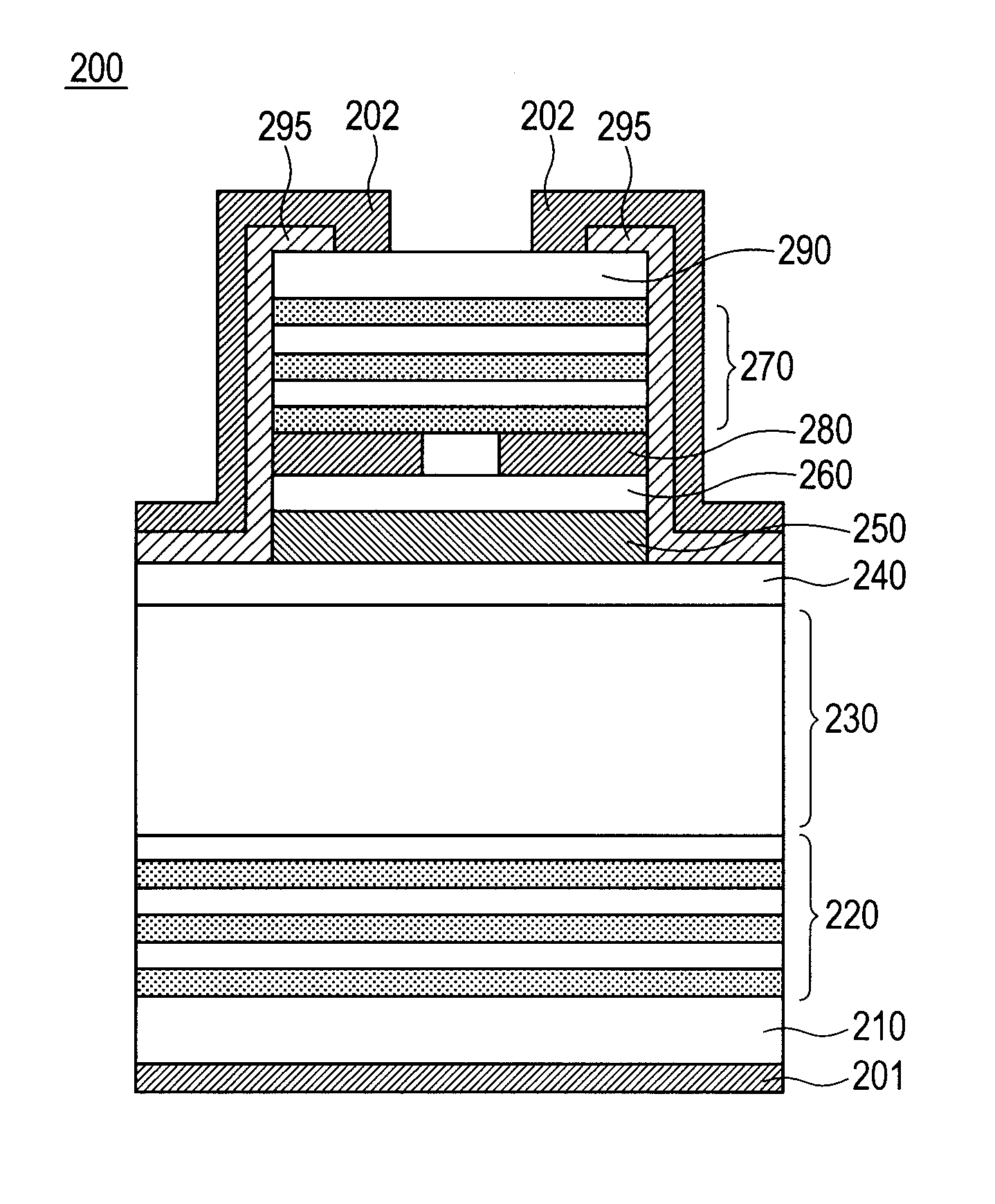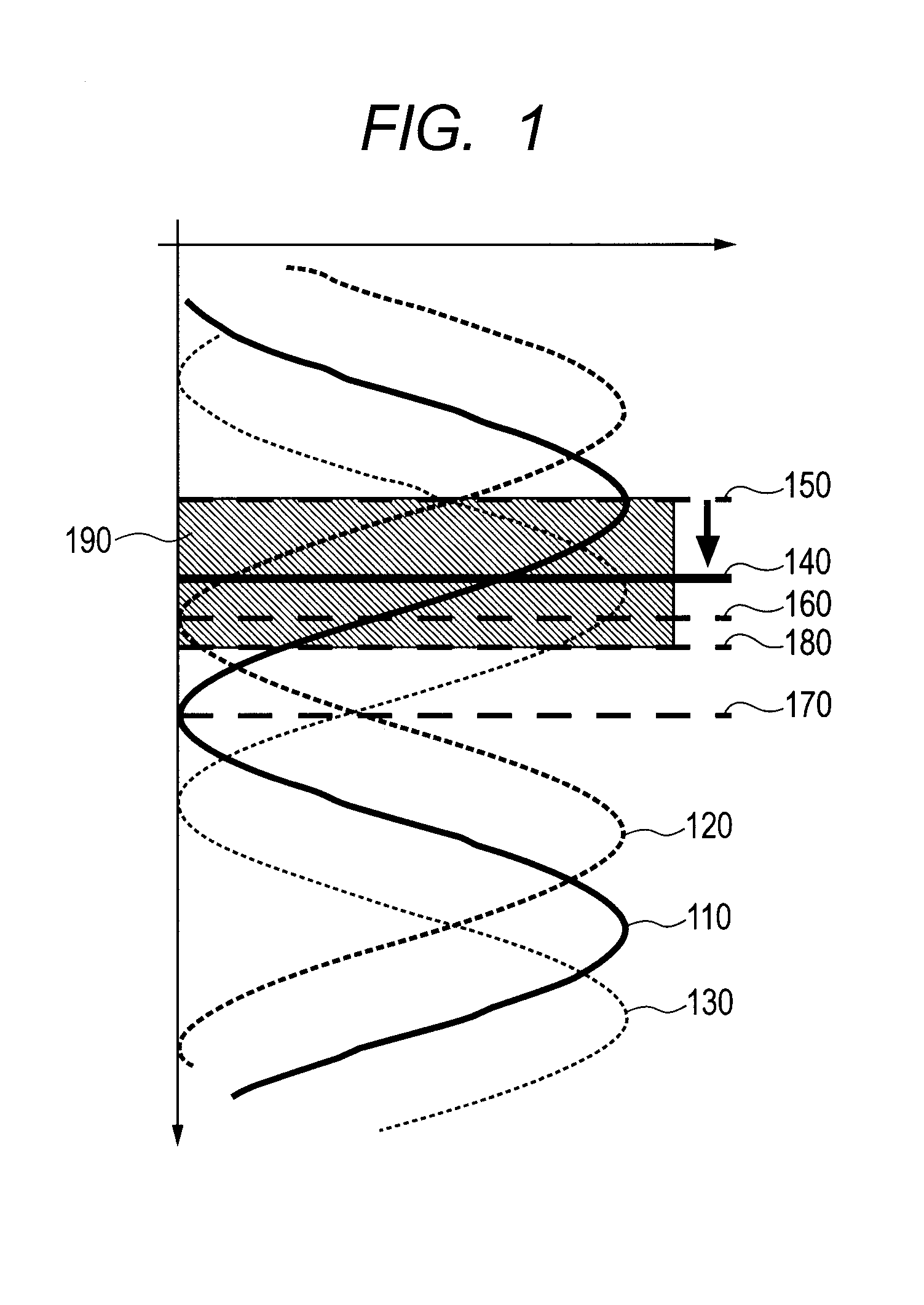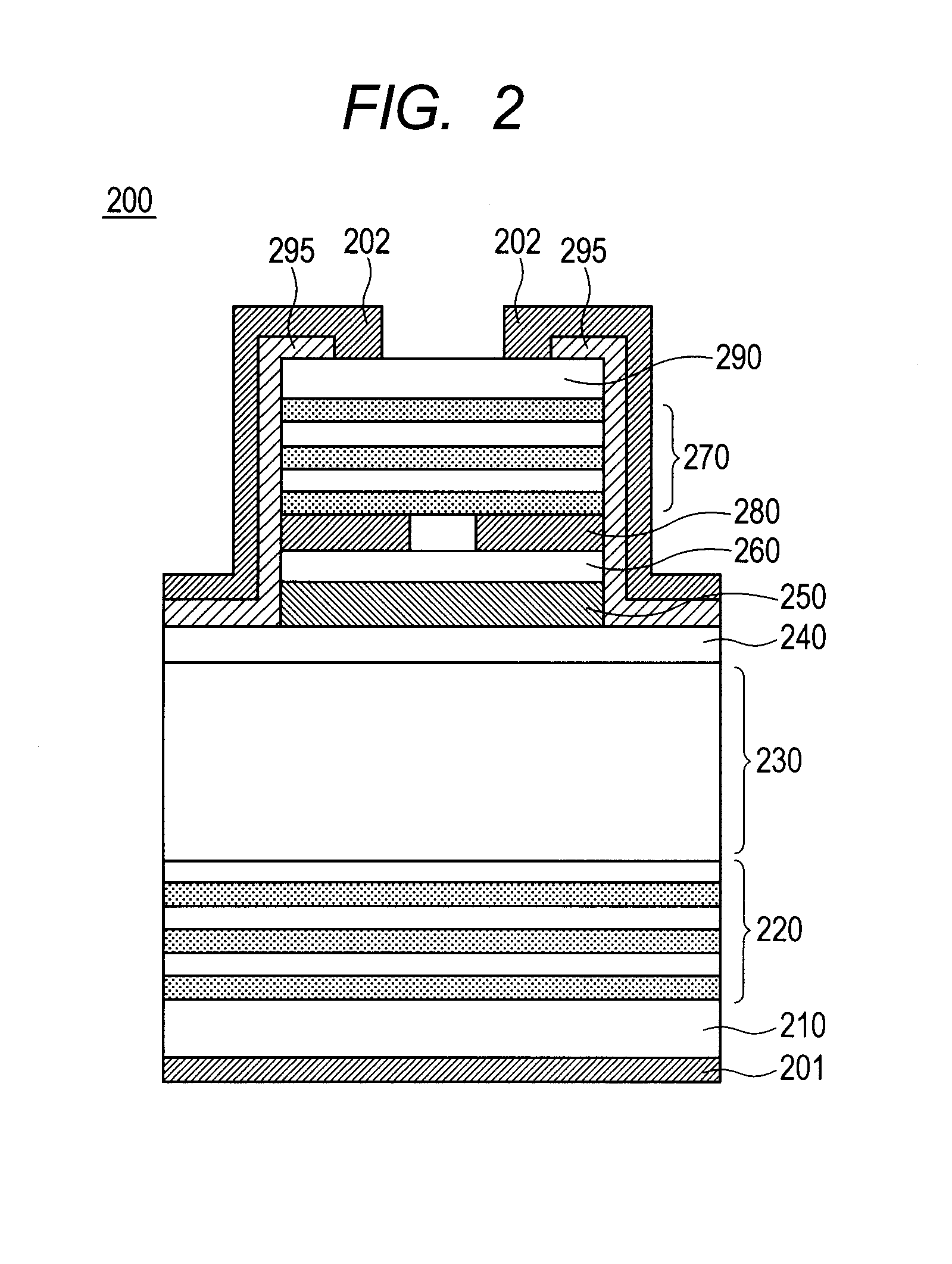Vertical cavity surface emitting laser and image forming apparatus
- Summary
- Abstract
- Description
- Claims
- Application Information
AI Technical Summary
Benefits of technology
Problems solved by technology
Method used
Image
Examples
first embodiment
[0045]An example of configuration of the vertical cavity surface emitting laser applying the present invention will be described as the first embodiment with reference to FIG. 4.
[0046]FIG. 4 illustrates a relationship between longitudinal modes and a gain spectrum of the vertical cavity surface emitting laser (hereinafter, “surface-emitting laser”) according to the present embodiment. The relationship between a resonant wavelength λ1 of a first longitudinal mode 410 and a resonant wavelength λ2 of a second longitudinal mode 420 is λ21. Although g3=0 in FIG. 4, it is only necessary to satisfy λ21, g1≠0, and g2≠0.
[0047]The active layer has a gain spectrum, in which the wave is generated at the wavelength λ1, and the difference between the wavelength λ1 and a peak wavelength λg of the gain spectrum determined by the active layer is an amount of detuning Δλ (=λ1−λg). The gain spectrum is expressed by a function g(y).
[0048]The present embodiment has a resonator structure in which the fir...
second embodiment
[0118]An infrared surface-emitting laser of wavelength 780 nm will be described as a second embodiment.
[0119]Unlike the first embodiment, λ2>λ1, g1≠0, g2≠0, and g3≠0 are satisfied in the configuration of the present embodiment.
[0120]Although a specific layer configuration from the lower multilayer reflecting mirror to the upper multilayer reflecting mirror of the present embodiment is different from that of the first embodiment, the fabrication method and the basic layer configuration of the surface-emitting laser are the same as in the first embodiment. Therefore, the description of the fabrication method, the substrate, and the electrode, for example, will not be repeated.
[0121]FIG. 7 illustrates a relationship between longitudinal modes and a gain spectrum of the surface-emitting laser according to the present embodiment. FIG. 7 illustrates a relationship diagram between gains g1, g2, and g3 and Δλ, ΔλN, and g(y) of an active layer related to a first longitudinal mode 710, a seco...
third embodiment
[0174]In a third embodiment, an example of applying a periodic gain structure using a plurality of active layers, instead of using one active layer as in the first area of the first embodiment, is described.
[0175]More specifically, a second active layer is placed in addition to the first active layer in the present embodiment. The first active layer and the second active layer are arranged in the first area.
[0176]FIG. 10 illustrates a cross-sectional schematic diagram for describing a layer configuration of a surface-emitting laser according to the present embodiment. In FIG. 10, the first area is formed by a lower clad layer 1040, a lower active layer 1050, an inter-active-layer spacer layer 1053, an upper active layer 1055, and an upper clad layer 1060. The upper active layer 1055 serves as the first active layer, and the lower active layer 1050 serves as the second active layer.
[0177]In the upper active layer 1055, as in the first embodiment, the gain is g1 and the confinement fa...
PUM
 Login to View More
Login to View More Abstract
Description
Claims
Application Information
 Login to View More
Login to View More - R&D
- Intellectual Property
- Life Sciences
- Materials
- Tech Scout
- Unparalleled Data Quality
- Higher Quality Content
- 60% Fewer Hallucinations
Browse by: Latest US Patents, China's latest patents, Technical Efficacy Thesaurus, Application Domain, Technology Topic, Popular Technical Reports.
© 2025 PatSnap. All rights reserved.Legal|Privacy policy|Modern Slavery Act Transparency Statement|Sitemap|About US| Contact US: help@patsnap.com



